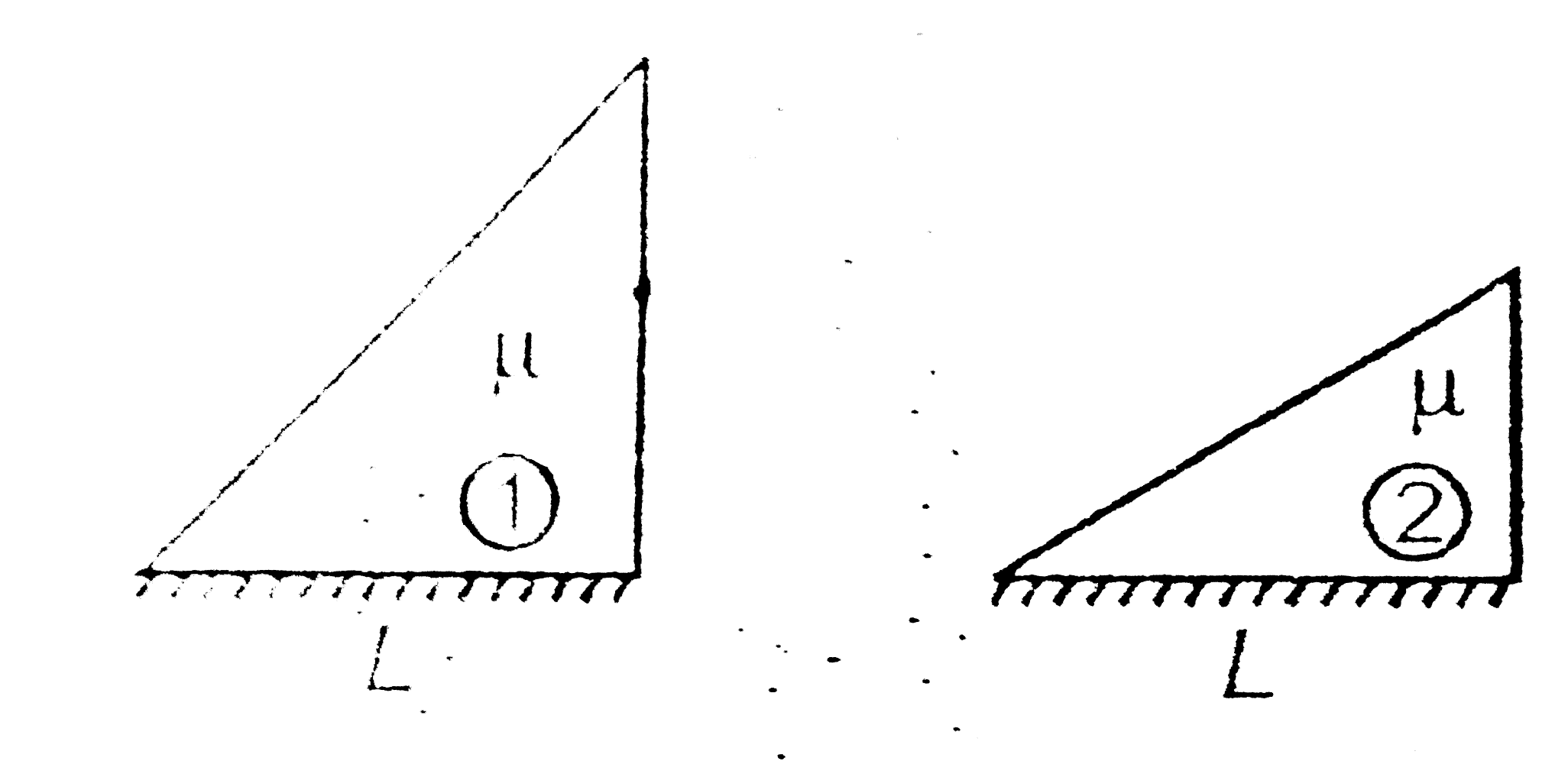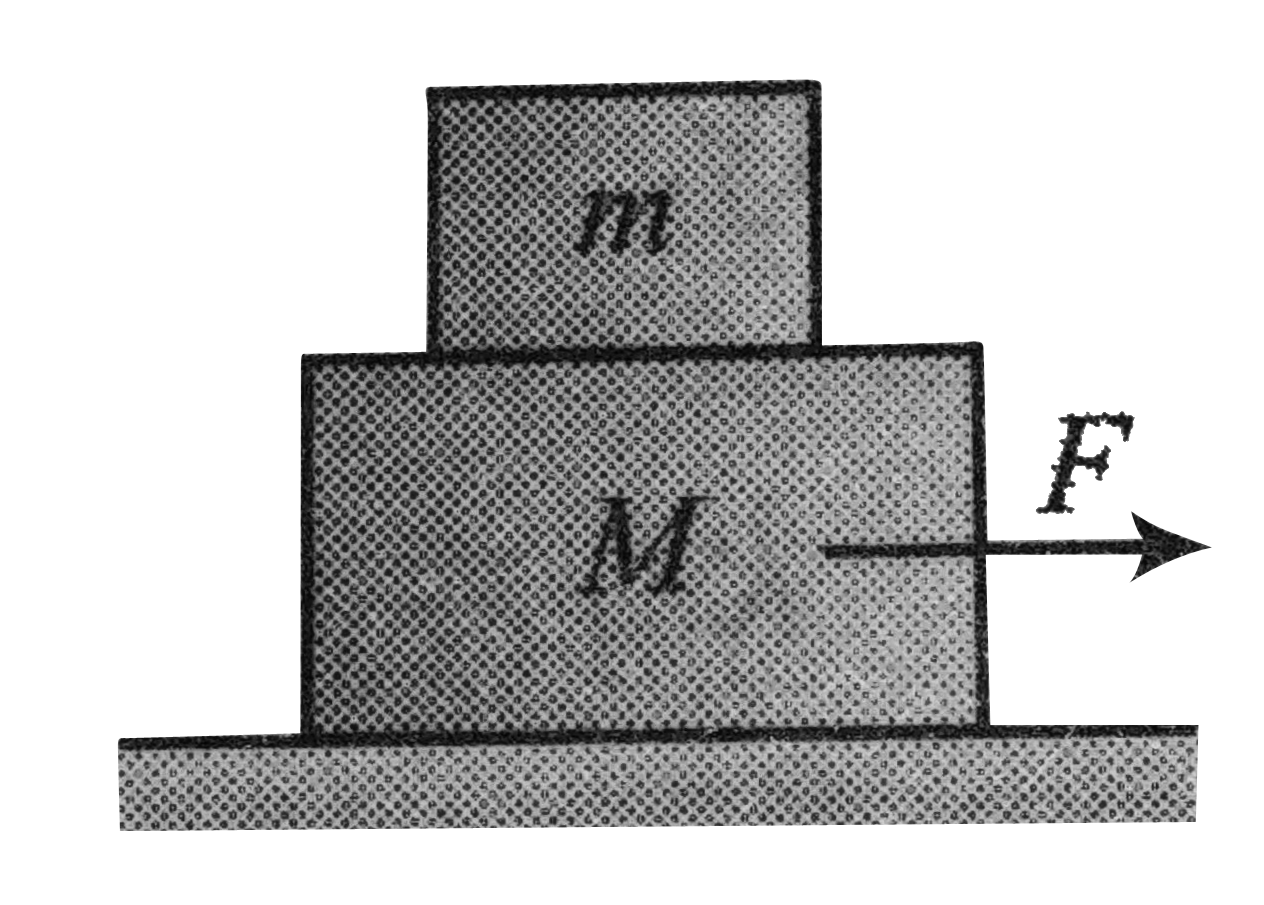Work done by force of static friction .
can be positive
can be negative
can be zero
All of these
The correct Answer is:D
Step-by-Step Solution:
1. Understanding Static Friction:
- Static friction is the force that prevents an object from moving when a force is applied. It acts when an external force is trying to move a stationary object but the object does not move.
2. Identifying the Conditions:
- For static friction to act, the applied force must be less than or equal to the maximum static friction force, which is given by the equation:
Fs≤μsN
where μs is the coefficient of static friction and N is the normal force.
3. Analyzing Work Done:
- Work done by a force is defined as:
W=F⋅d⋅cos(θ)
where F is the force, d is the displacement, and θ is the angle between the force and the displacement direction.
4. Considering the Displacement:
- In the case of static friction, if the object remains at rest (which is the case when static friction is in action), the displacement d is zero.
5. Calculating Work Done:
- Since the displacement is zero, the work done by static friction can be calculated as:
W=Fs⋅0⋅cos(θ)=0
- Therefore, the work done by the force of static friction is zero.
6. Conclusion:
- The work done by the force of static friction can only be zero when the object does not move.
Final Answer:
The work done by the force of static friction is zero.
---
- Static friction is the force that prevents an object from moving when a force is applied. It acts when an external force is trying to move a stationary object but the object does not move.
- For static friction to act, the applied force must be less than or equal to the maximum static friction force, which is given by the equation:
Fs≤μsN
where μs is the coefficient of static friction and N is the normal force.
- Work done by a force is defined as:
W=F⋅d⋅cos(θ)
where F is the force, d is the displacement, and θ is the angle between the force and the displacement direction.
- In the case of static friction, if the object remains at rest (which is the case when static friction is in action), the displacement d is zero.
- Since the displacement is zero, the work done by static friction can be calculated as:
W=Fs⋅0⋅cos(θ)=0
- Therefore, the work done by the force of static friction is zero.
- The work done by the force of static friction can only be zero when the object does not move.
The work done by the force of static friction is zero.
Topper's Solved these Questions
- BOOK - DC PANDEY ENGLISHCHAPTER - WORK, ENERGY & POWEREXERCISE - Level 1 subjective27videos
WORK, ENERGY & POWER
- BOOK - DC PANDEY ENGLISHCHAPTER - WORK, ENERGY & POWEREXERCISE - Level 2 Objective30videos
WORK, ENERGY & POWER
- BOOK - DC PANDEY ENGLISHCHAPTER - WORK, ENERGY & POWEREXERCISE - Level 1 Assertion And Reason12videos
WORK, ENERGY & POWER
- BOOK - DC PANDEY ENGLISHCHAPTER - WAVE MOTIONEXERCISE - Integer Type Question11videos
WAVE MOTION
- BOOK - DC PANDEY ENGLISHCHAPTER - WORK, ENERGY AND POWEREXERCISE - MEDICAL ENTRACES GALLERY33videos
WORK, ENERGY AND POWER
Similar Questions
STATEEMNT-1 : Work done by frictional force is always either negative or zero.
because
STATEMENT-2 : Work done by the static friction on a system may be zero.View SolutionConsider a block of mass m that slides down the different inclined planes having same base legth L and same coefficient of friction.

STATEMENT-1 Work done by force of friction will be same for the motion of the two inclined planes.
STATEMENT-2 Frictional force is a conservation force.View Solution
Knowledge Check
- Question 1 - Select One
Assertion: Work done by the force of friction in moving a body around a closed loop is zero.
Reason: Work done does not depend upon the nature of force.AIf both assertion and reason are true and reason is the correct explanation of assertion.BIf both assertion and reason are true not but reason is not the correct explanation of assertion.CIf assertion is true but reason is falseDIf both assertion and reason are false. - Question 2 - Select One
the work done against force of friction is
A8.7 JB10.7 JC7.8 JD12.7 J
A body of mass 10 kg is moving on a horizonal surface be applying a force of 10 N in the forward direction. The body moves with a constant velocity of 0.2ms−1. Work done by the force of friction in the first 10 seconds is
View SolutionA block of mass m is kept over another block of mass M and the system rests on a horizontal surface. A constant horizontal force F acting on the lower block produces an acceleration F2(m+M) in the sytem. The two blocks always move together. Consider displacement d of the system.
a. Find the work done by friction on bigger block.
b. Find the coefficient of kinetic friction between the bigger block and the horizontal surface.
c. Find the frictional acting on the smaller block.
d. Find the work done by the force of friction on the smaller block by the bigger block.
e. Find the work done by static friction on bigger block.
 View Solution
View SolutionWork done by static friction on an object :
View SolutionAssertion: Static frictional force is a self adjusting force.
Reason: Force of static friction does not depend upon the mass of the body.View SolutionSTATEMENT-1 Work done by static friction in any reference frame is zero
STATEMENT-2 If work done on the body is positive its kinetic energy increases.View SolutionA crate of mass 100 kg rests on the floor. The coefficient of static friction is 0.4. If a force of 250 N(parallel to the floor) is applied to the create, what's the magnitude of the force of static friction on the crate ?
View Solution

